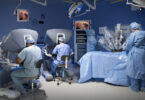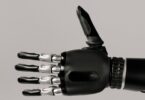[et_pb_section bb_built=”1″][et_pb_row][et_pb_column type=”4_4″][et_pb_text _builder_version=”3.13.1″]
A team of scientists has detected the electrical equivalent of the last breath of a living cell and, with it, a new way of testing drugs.
Individual biological cells to stay alive must transfer electrically charged particles, called ions, through their cell membranes. This flow produces an electric current that, in principle, could be detected with a sufficiently sensitive equipment.
In this way, with funding from the Engineering and Physical Sciences Research Council (EPSRC), Prof. Andre Geim, from the University of Manchester, and his team have made the first measurement of a cellular ‘heartbeat’.
To detect the normal activity of the cell, the team of researchers modified devices originally used to detect weak magnetic fields in superconductors. Unfortunately, these modifications reduced the sensitivity of the technique and the normal activity of the yeast cell could not be detected. This is the first time that this technique is used in a living cell.
The researchers decided to conduct several experiments to elicit a response in the cell. As soon as the cell detected a substance added to see the reaction, the sensor registered an electrical signal. However, they added too much of the substance and it poisoned the cell.
Despite not getting the cardiogram they expected, the electrical signal has been the smallest detected in a living cell, a hundred times smaller than any previously detected. This has increased the confidence of the team in the possibility of developing a team sensitive enough to measure the beat of a cell.
According to Geim, when knowing the average or habitual pattern of electrical activity of the cell, it is possible to observe how the different drugs affect it. This electrical activity test could also be used to observe the effects of contamination on microorganisms in the environment.
These and other innovations are also possible in Pharmamedic.
[/et_pb_text][/et_pb_column][/et_pb_row][/et_pb_section]








